Personal Wealth Management / Market Analysis
A Quick Look at the Global Economy in Five Charts
December PMIs show a growing global economy.
Only two weeks into 2018 we already have evidence the global economy entered the new year on a strong note: Purchasing managers’ indexes (PMIs) the world over are all above 50, indicating expansion. Though stocks don’t need simultaneous global growth to rise, many folks are just starting to recognize the global economy’s strength—a sign of rising optimism, typical in maturing bull markets.
Here are the December PMI figures for some major economies.
Exhibit 1: December Manufacturing PMIs
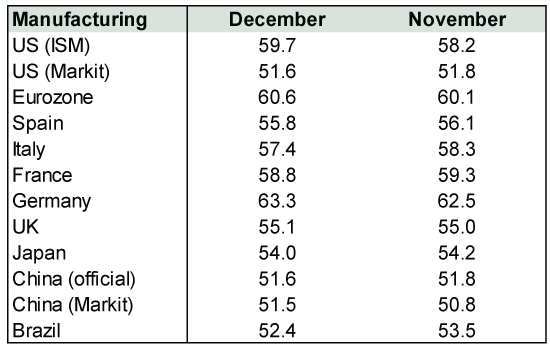
Source: FactSet, the Institute for Supply Management and the National Bureau of Statistics of China, as of 1/8/2018.
Exhibit 2: December Services PMIs
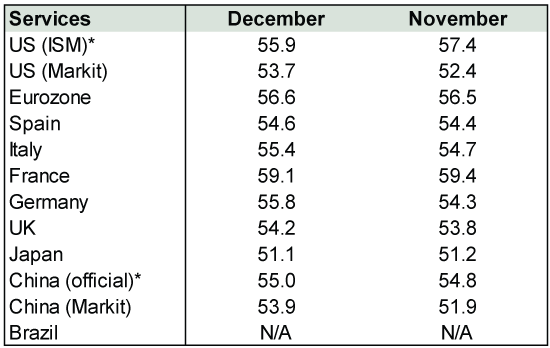
Source: FactSet, the Institute for Supply Management and the National Bureau of Statistics of China, as of 1/8/2018. *refers to “non-manufacturing” PMIs, which don’t exclusively cover services industries. For example, the ISM’s non-manufacturing PMI includes Mining, Utilities and Construction.
PMIs are monthly surveys tracking business activity, including new orders and employment as well as output. Different research firms record the responses, crunch the numbers and arrive at a number aimed at answering a simple question: Was business better or worse than the prior month? Though they don’t show the magnitude of growth, PMIs provide a quick snapshot of the economy.
Here are how some major developed economies’ PMIs fared in 2017. ISM’s non-manufacturing PMI for the US was well above 50 as 14 of 17 industries reported growth to end the year—demonstrating the expansion’s breadth.
Exhibit 3: US ISM Non-Manufacturing PMI
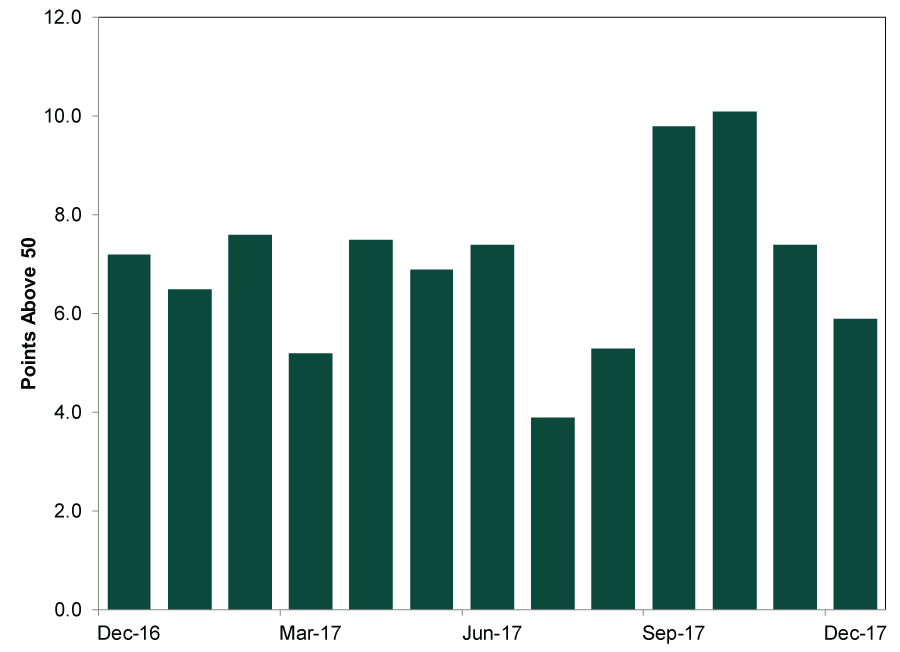
Source: Institute for Supply Management, as of 1/8/2018.
Though folks just started noticing eurozone growth last year, the currency union has been chugging along for a while. IHS Markit’s eurozone composite PMI—which mashes together the manufacturing and services sectors—steadily climbed in 2017.
Exhibit 4: Eurozone Composite PMI
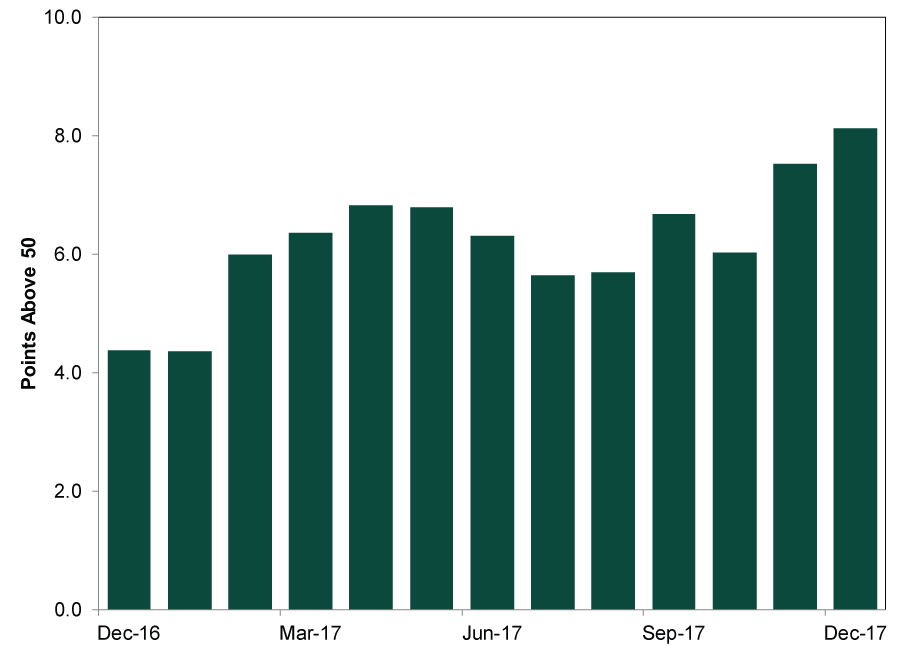
Source: FactSet, as of 1/8/2018.
And for all the handwringing over Brexit, the UK economy—specifically the services sector, which comprises nearly 80% of GDP—fared fine last year.
Exhibit 5: Markit/CIPS UK Services PMI
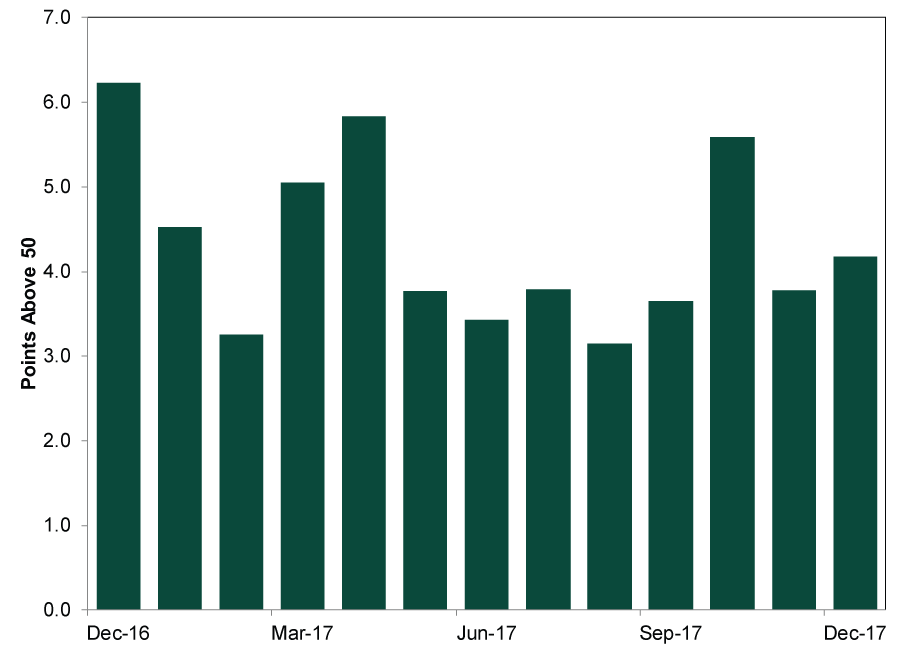
Source: FactSet, as of 1/8/2018.
Many PMIs’ most forward-looking components—namely, New Orders subindexes—point to future growth, as today’s orders are tomorrow’s production. In the US, ISM’s New Orders for manufacturing (69.4, the highest since 2004) and non-manufacturing (54.3) show firms will be busy early in 2018. Same for the eurozone. In the UK, both manufacturing and services new orders moderated but still indicated more growth to come. In China, services firms “saw the strongest upturn in new orders since May 2015,” while manufacturing enjoyed the fastest uptick since August. Broad economic growth doesn’t look like a 2017 exclusive.
But that has been the case for a while. With the global expansion becoming more broad-based, we believe more investors will grow more optimistic as they realize the bull market stands on firm ground—a reason to stay bullish.
If you would like to contact the editors responsible for this article, please message MarketMinder directly.
*The content contained in this article represents only the opinions and viewpoints of the Fisher Investments editorial staff.
Get a weekly roundup of our market insights
Sign up for our weekly e-mail newsletter.

You Imagine Your Future. We Help You Get There.
Are you ready to start your journey to a better financial future?

Where Might the Market Go Next?
Confidently tackle the market’s ups and downs with independent research and analysis that tells you where we think stocks are headed—and why.





